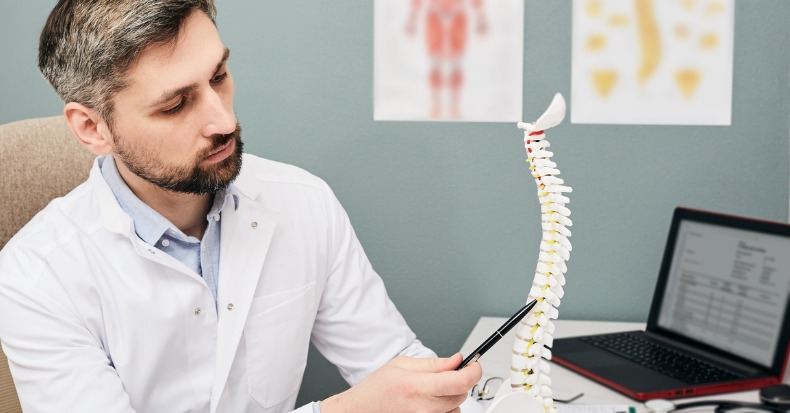Newest Articles
In normal head and neck posture, the center of the shoulder joints are located vertically in line with the bottom of the mastoid processes (the bone just behind the bottom of the ear at the base of the skull) while the muscles on the posterior (or back side) of the cervical spine (neck) act to [..]
While the primary driver for carpal tunnel syndrome (CTS) may sometimes be hormonal changes (hypothyroid, pregnancy, or birth control use), type 2 diabetes, or an inflammatory condition (rheumatoid arthritis, psoriatic arthritis, or gout), many patients’ hand and wrist symptoms are caused by musculoskeletal issues that place pressure on the median nerve or restrict its motion. [..]
Shoulder instability (SI) occurs when the soft tissues (joint capsule, ligaments, and labrum) that hold the humerus in the shallow ball-and-socket glenohumeral joint become stretched, torn, or detached. When these tissues are damaged, the resulting shoulder instability is characterized as structural. If instability is caused by abnormal muscle activity that places too much or too [..]
The whiplash process can lead to a number of concurrent symptoms (neck pain, headaches, limited cervical range of motion, etc.) referred to as whiplash associated disorders, or WAD. It’s estimated that about one in five WAD patients will also develop potentially chronic, concussion-like symptoms like brain fog, difficulty concentrating, and other cognitive impairments. A 2020 [..]
Though some element of our overall wellbeing is defined by our genetics, there is a lot you can do to live a long and healthy life. Here’s a short list:
Get enough sleep. While the average adult needs only seven to nine hours of sleep a night to feel rested, younger age groups usually require [..]
LEGITIMIZING BACKGROUND
The United States National Library of Medicine (NLM) is operated by the United States federal government, and is the world’s largest medical library. It is located in Bethesda, Maryland. The NLM is part of the National Institutes of Health (NIH), U.S. Department of Health and Human Services. NLM started in 1836 as a small collection [..]
Cycling is regarded as a highly enjoyable and effective form of exercise. However, there is some confusion about how posture while riding can affect the lower back and whether cycling is helpful for recovery from lower back pain.
Bicyclists ride with either a round-back, flat-back, or curved-in back, which is based on the degree of [..]
Neck pain is commonly associated with sitting in front of a computer for prolonged periods of time. So is there a “best” or “ideal” type of desk to use when working at a computer all day?
The sit-stand desk has gained significant popularity in recent years, especially with an 83% increase in sedentary jobs since [..]
With up to 50% of whiplash associated disorder (WAD) patients experiencing long-term symptoms, is there a way to predict which patients are likely to recover following a whiplash injury? To answer this question, a team of researchers analyzed findings from twelve systemic reviews to identify prognostic factors that could help predict patient outcomes following a [..]
The electromagnetic spectrum spans from gamma rays—which can be deadly—to the radio waves that flow in the air all around us without any effect. Between the ultraviolet and infrared sections of the spectrum is the most important wavelength for our eyes: visible light. But research indicates that blue light can be problematic in high doses—especially [..]
When it comes to a condition like chronic knee pain, there are many treatment options available to reduce pain and improve function, including chiropractic care. However, there are cases when a patient may opt for total knee arthroplasty (TKA). In some instances, they may be able to resume their everyday activities, but a segment of [..]
According to the American Medical Association Guides on the Rating of Permanent Impairment, if one loses the use of their thumb, index finger, and middle finger, they’ve lost 80% of the use of their hand. It’s no wonder why carpal tunnel syndrome (CTS)—a condition characterized by symptoms of numbness, tingling, pain, and weakness that affects [..]













